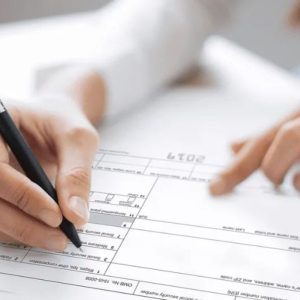Did you know, you could take advantage of potential tax benefits inside super to save for your first home?
It’s been called the Australian Dream by many – owning a home. However, saving for a deposit on one can sometimes be challenging.
For this reason, the government started the First Home Super Saver (FHSS) Scheme on 1 July 2018 to help aspiring homeowners save towards a deposit on their first property.
A number of prospective buyers have taken advantage of the scheme to help reach their goal of home ownership, with the Australian Taxation Office (ATO) revealing $415 million had been accessed under the scheme since it begun^.
If you’re wondering if the FHSS Scheme could be a path to you owning your first home, read on to find out about potential advantages and how it might work for you.
- How does the FHSS Scheme work?
Under the scheme, you can save for your first home by adding additional money to your super account in the form of voluntary contributions.
This includes some types of concessional (before-tax) contributions and some non-concessional (after-tax) contributions.
If you’re eligible, you can later withdraw this money, including associated earnings, less tax, to put towards a deposit on your first home.
- What types of contributions count toward the scheme?
- Salary sacrifice contributions, which you might set up with your employer, on top of any compulsory contributions they might pay you, if you’re eligible.
- Tax-deductible contributions, which are made using after-tax dollars, for instance with the money in your bank account, which you then claim a tax deduction for at tax time.
- Personal contributions, which you make using after-tax dollars, but don’t claim a tax deduction for.
Super contributions that don’t count
- Compulsory employer contributions, which your employer may be required to pay you under the Government’s Superannuation Guarantee.
- Spouse contributions that a partner may be paying into your super for you.
- Is there a limit on how much can be withdrawn?
You can apply to withdraw eligible voluntary contributions you’ve made since 1 July 2017, up to a maximum of $15,000 per financial year and $50,000 in total per person.
Partners can also combine their own eligible contributions towards the purchase of the same property.
- What can the money be used for?
Eligible first home buyers can use money withdrawn under the scheme to put toward residential property, or land, provided a contract to build the home is entered into within the set timeframes. Houseboats and motorhomes are not included.
- What are the savings benefits?
A key advantage of the scheme is that the earnings on the money you contribute to your super fund are taxed at up to 15%. This may be lower than the tax rate you’d pay on earnings received outside of super, which are generally subject to your personal marginal tax rate.
Check out the table below to see how tax on super compares to individual income tax rates for Australian tax residents for the 2023-24 financial year.
| Taxable income | Marginal tax rate | Max tax on earnings inside super |
| $18,201 – $45,000 | 19%* | 15% |
| $45,001 – $120,000 | 32.5%* | 15% |
| $120,001 – $180,000 | 37%* | 15% |
| $180,001 and over | 45%* | 15% |
* Plus up to 2% Medicare levy where applicable.
Another important advantage is that if you make salary sacrifice or tax-deductible contributions to super, those contributions will be taxed at 15% rather than your marginal tax rate, which could result in a significant tax saving, depending on your situation. There are also generally tax concessions when the contributions are withdrawn.
- What tax is payable when the money is withdrawn?
When you withdraw amounts that were contributed under a salary sacrifice arrangement or as part of a tax-deductible contribution, you’ll have tax withheld from the money you receive.
This money (including any associated earnings) will be taxed at your marginal tax rate (like your employment income), but with a 30% tax offset, which reduces the tax you pay.
If you’ve made personal contributions under the scheme that you’ve not claimed a tax deduction for, no tax will be payable on these amounts when they are withdrawn from super.
Another thing to keep in mind when it comes to tax on super are general contributions caps, as penalties apply if you go over these limits.
- What other eligibility criteria applies?
- You must be 18 or older to make a withdrawal under the scheme.
- You can’t have owned property in Australia before.
- You must live in the property for at least six months within the first 12 months after buying.
- You must not have previously made a withdrawal request under the scheme.
- What happens when it’s time to withdraw the money?
Here’s what you’ll generally need to do:
- Get a FHSS determination from the ATO to find out how much you can withdraw.
- You can request unlimited determinations, but can only make one withdrawal request.
- Buy a home or enter into a contract to build a home within 12 months of the withdrawal. Extensions may apply.
- If the purchase doesn’t go ahead, within the allowable timeframes, the money may either be put back into super or will incur further tax of up to 20%.
- Where else can first home buyers find information?
Additional rules may apply, so do your research before making any decisions. You can visit the ATO website for further details on the FHSS Scheme.
You may also want to check your state or territory’s First Home Owner Grant information to see what else you may be eligible for.
Source: ATO First Home Super Saver Scheme data
Source: CFS





